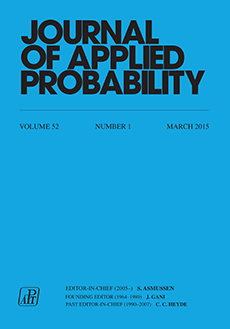Abstract
Computing the value of a high-dimensional integral can often be reduced to the problem of finding the ratio between the measures of two sets. Monte Carlo methods are often used to approximate this ratio, but often one set will be exponentially larger than the other, which leads to an exponentially large variance. A standard method of dealing with this problem is to interpolate between the sets with a sequence of nested sets where neighboring sets have relative measures bounded above by a constant. Choosing such a well-balanced sequence can rarely be done without extensive study of a problem. Here a new approach that automatically obtains such sets is presented. These well-balanced sets allow for faster approximation algorithms for integrals and sums using fewer samples, and better tempering and annealing Markov chains for generating random samples. Applications, such as finding the partition function of the Ising model and normalizing constants for posterior distributions in Bayesian methods, are discussed.
Citation
Mark Huber. Sarah Schott. "Random construction of interpolating sets for high-dimensional integration." J. Appl. Probab. 51 (1) 92 - 105, March 2014. https://doi.org/10.1239/jap/1395771416
Information





